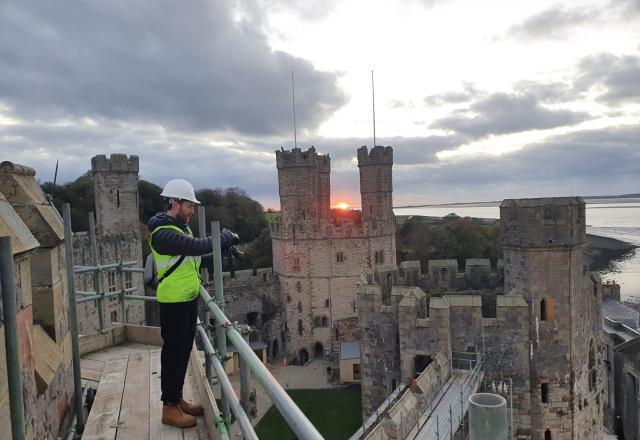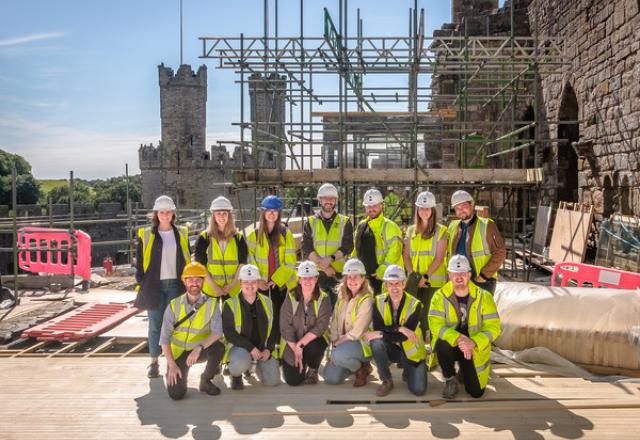A new place has been shaped at Caernarfon's King's Gate. A place to sit and reflect that is accessible to all.
Recognised around the world as one of the greatest buildings of the Middle Ages, Caernarfon Castle is Grade I listed and a Scheduled Monument. It became part of Wales’s first World Heritage Site in 1986.
Heritage
Conservation
The big idea
From the very first conversation we had with Cadw, it was clear that making the King's Gate accessible to all was the key to unlocking the potential of this part of the castle. The ability to bring people to the upper floor and shape a new place for them to dwell and discover more about the history of this extraordinary place has driven every design decision we have made through this complex and challenging project.
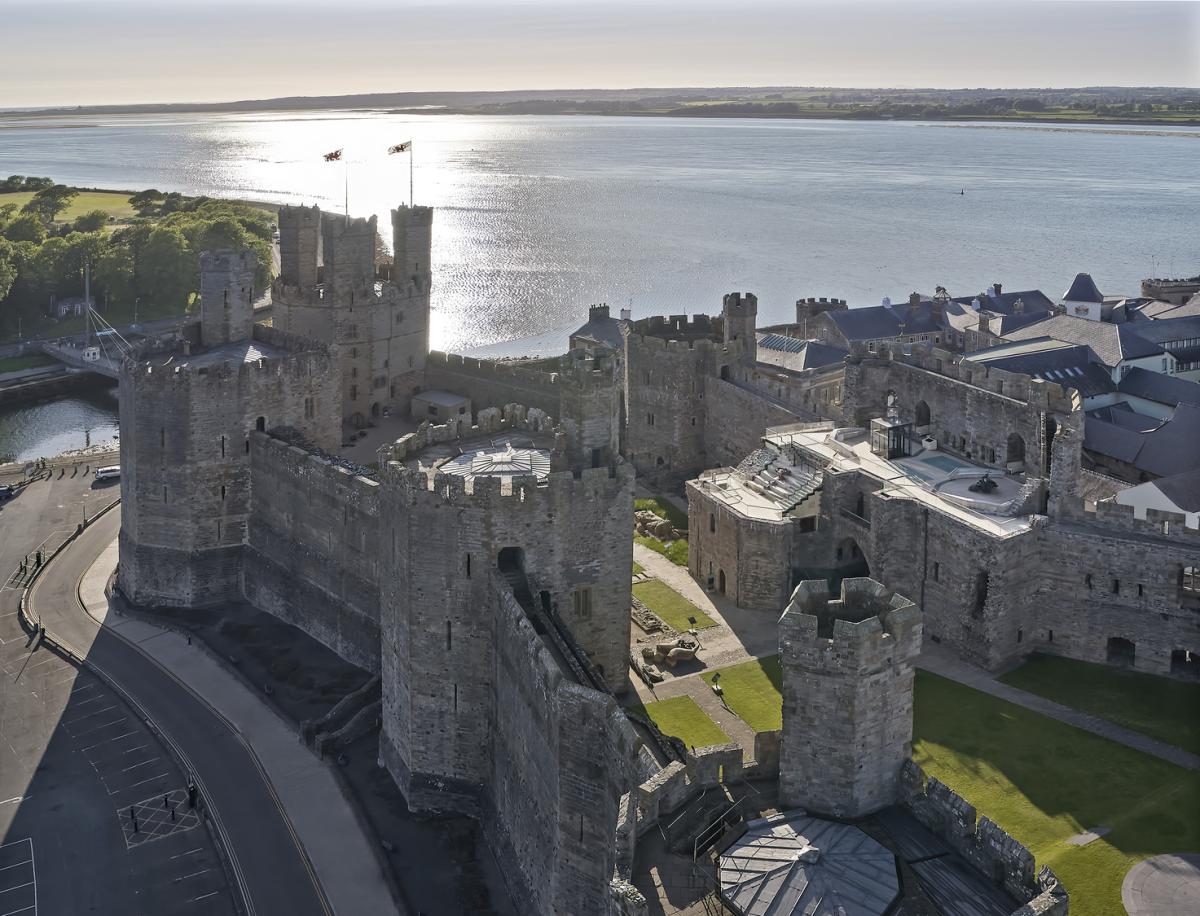
The concept
We worked closely with clients Cadw, and a wide range of stakeholders, including ICOMOS UK, to test our ideas and create new contemporary architecture that is infused with and responds to, the significance of this amazing place.
Our designs add lightweight, contextual forms as bespoke pieces of 'furniture' that fit onto and within the triple towers of the gatehouse, forming spaces to explore and discover that result in a platform on the upper level, a place to sit and reflect that is accessible to all.
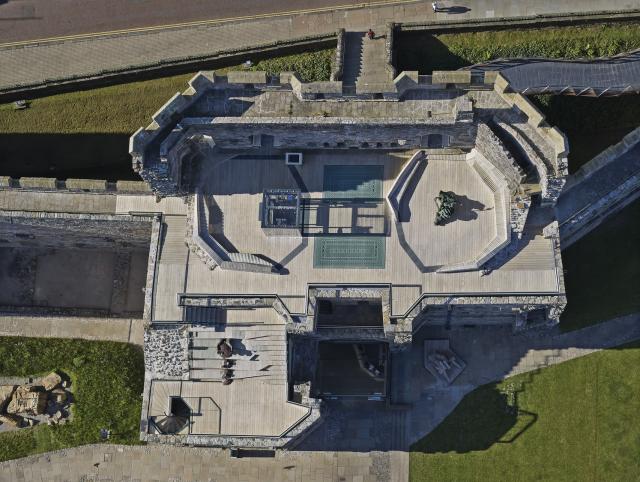
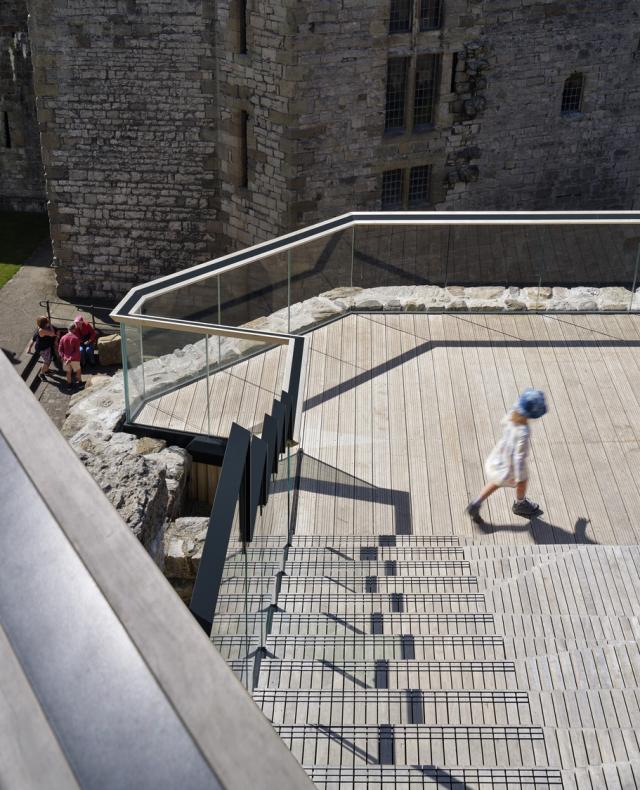
‘The hands that built the castle’
Across the King’s Gate are a number of artworks that interpret the stories of ‘the hands that built the castle’. These are integral to the architectural approach with a series of experiences created across the scheme that showcase stories alongside the new places revealed to visitors in the King's Gate. The interpretation is intentional in not telling a single story, instead, it encourages visitors to form their own opinions on how they perceive the site’s history.
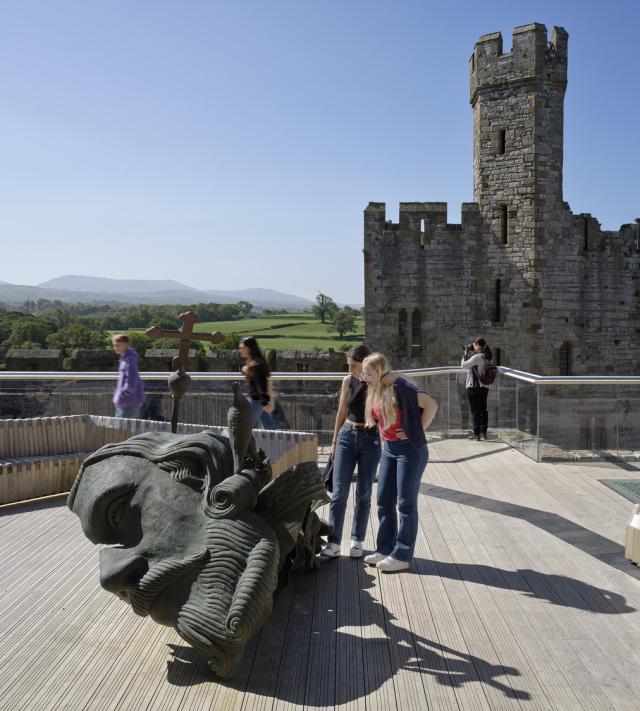
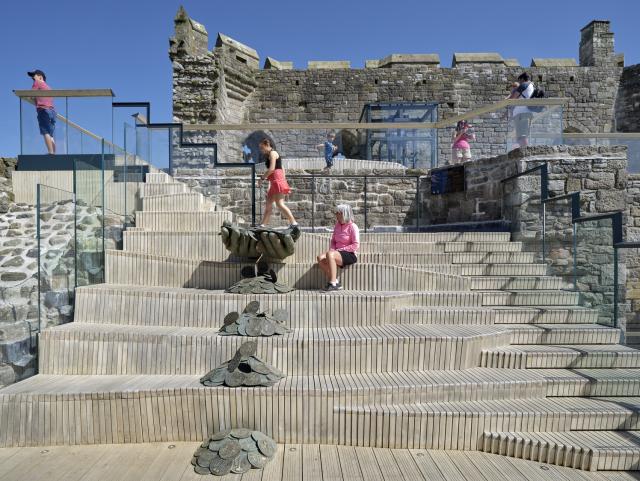
A series of interventions
Our response isn’t a single piece of architectural design; it's a collection of interventions that create experiences and improves the facilities for all visitors.
The new accommodation has been designed to form the negative of the King's Gate with vertical access formed by a lift that rises through each floor to open onto the upper platform in a glazed lobby. On the upper level, a viewing deck connects to the wall walk and creates new places to sit and take in the views across the castle and beyond. A cafe is on the level below and knits into the third tower, leading to the education room and chapel in the main two towers. A new gift shop is at ground floor level and facilities including changing places toilets are in the basement.
All new interventions are reversible and touch the original fabric of the castle lightly. The structure and spatial designs are a complex kit of parts that take account of the original forms of the castle structure, the significance and condition of the fabric, the technical requirements of the new facilities, the visitor experience, access, and story.
By adopting a simple material palette and design language across the project, each part could have its own identity whilst still being read as a collective piece of architecture.
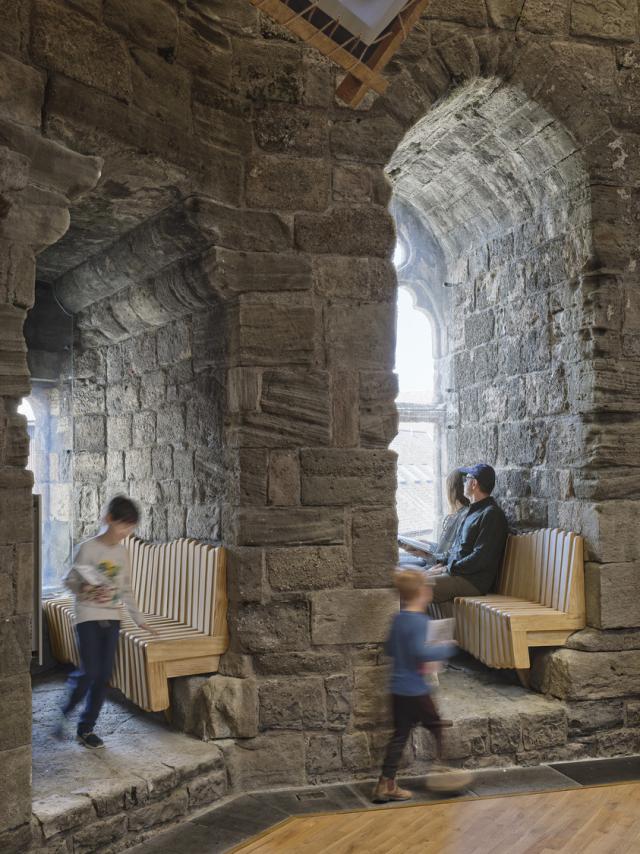
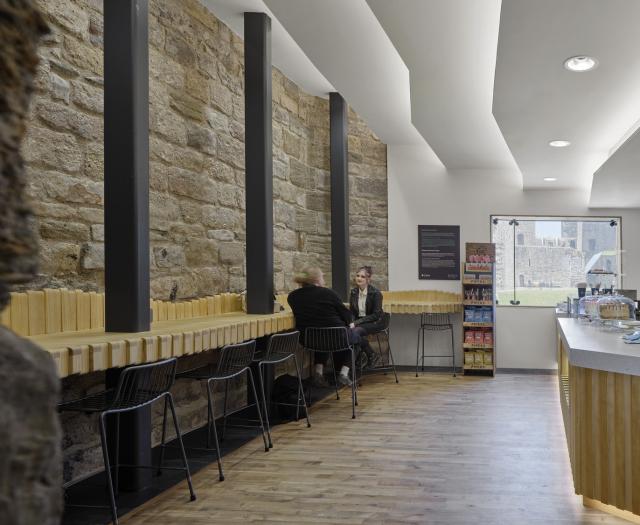
Watch the project take shape
A timelapse video shows how the empty towers of the King's Gate have been transformed into a new accessible place.
Bespoke design approaches
Look around the King’s Gate and you will see bespoke design approaches that celebrate the castle in contemporary ways.
At the upper deck, the seating reflects the position of the towers beneath. It is handmade piece by piece by traditional craftsmen and its organic form interprets the unfinished nature of the gatehouses.
The spiral staircase is constructed of individual pieces layered to follow the rough castle walls and continue the stone stair upwards to the new tiered seating.
The frameless glass balustrades on the upper deck are tall enough to comfortably lean on without obstructing the views. The shaped timber top rail has been designed specifically to act as a counterpoint to the lightweight glass, reflecting the robust, weighty pieces of furniture traditionally found around the castle.
The glazed lift that brings visitors up through the building and out onto the top deck is a unique design starting with a backdrop of a medieval tower and introducing a modern structure that needed to be both reversible and clearly contemporary. The external glass is treated to reduce its reflectance, allowing uninterrupted views for visitors and reducing its impact on the castle's significance.
We have selected and carefully detailed quality materials to celebrate the King's Gate as the grand gatehouse and high-status entrance to the castle, whilst reflecting the unfinished nature of the site through clearly contemporary additions.
The result is a bold and innovative approach; challenging convention whilst revealing and enhancing the outstanding universal value of this remarkable place.
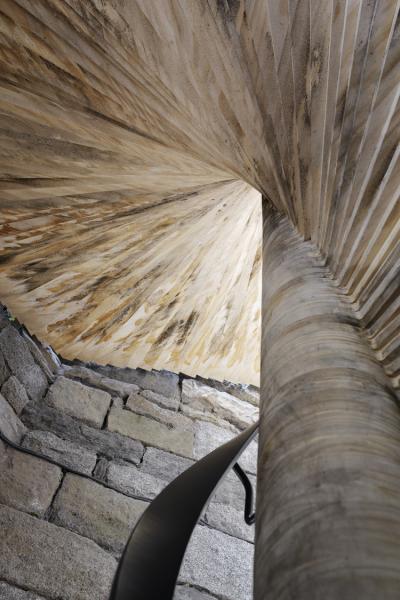
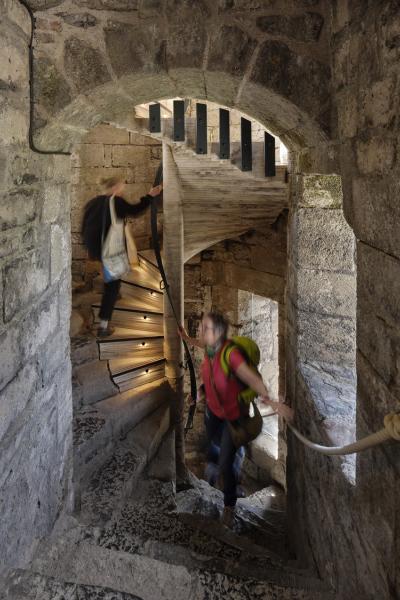
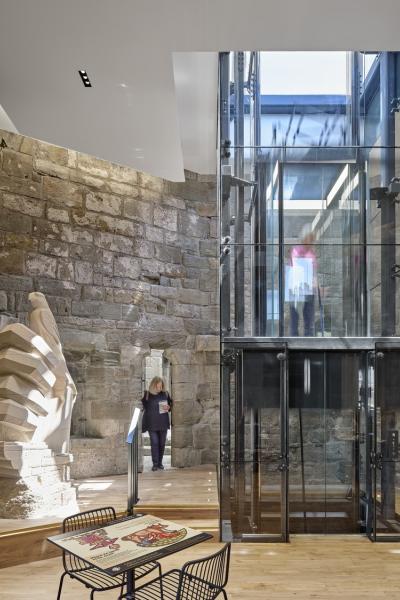
Conservation of the fabric
Conservation works to the King's Gate were undertaken as part of the project. A very light-touch approach was taken to stone repairs, repointing, and cleaning. Painstaking attention to detail underpins the conservation works evident in the repointing of the inner and outer elevations of the King's Gate and Battlements, where several sample boards were taken to match the mortar to the walls which have seen phases of repair over time.
Heritage Consultancy
Buttress' Heritage Consultants worked closely with the architectural team, client, and stakeholders to provide a sound understanding of the impacts of the design proposals on the significance of the World Heritage Site. A detailed Heritage Impact Assessment was undertaken following ICOMOS Guidance and was adopted by the team to help inform the design process and manage the consents process for the scheme. The bespoke document is being adopted as best practice by Cadw for future schemes that require this thorough understanding.
Find out more detail here.
related content
Inclusion is critical for living heritage - Design Council for Wales
Director Stephen Anderson reflects on the importance of inclusion when enhancing built heritage.
Behind the B: Lucy Ashcroft
In our latest 'Behind the B' instalment we chat to Architect Lucy Ashcroft.
Lucy Ashcroft
Lucy is a creative associate who has an in-depth knowledge of building conservation and urban regeneration.
Sebastian Chambers
A talented designer with strong graphics and visualisation skills, Sebastian is currently supporting a wide variety of projects in our arts, culture and heritage teams.
Stephen Anderson
Stephen leads the practice's heritage team, specialising in projects that involve listed buildings and heritage assets and responding to their impact on place and local communities.
Alex Scrimshaw
Alex is an experienced architectural technologist working within the practice’s historic buildings team.
Image credits
© Daniel Hopkinson
